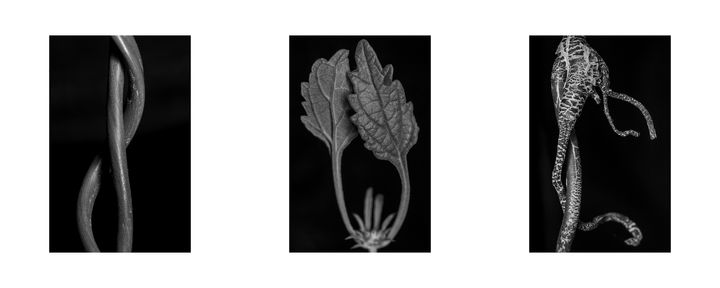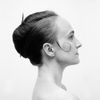
Untitled #155, #131, #241, by Anna Agoston
"Women's experiences are very different from men's. As we grow up socially, psychologically and every other way, our experiences are just different. Therefore our art is going to be different.” -Joan Snyder
I began to be aware of what I should not do as a woman when I first moved from France to the United States in 2002.
Cultural differences helped me see gender stereotypes that I had not previously noted and I realized that as a woman I was not supposed to let my feelings flow, be too sensitive, or show emotion in professional and social settings.
Since then, I have spent most of my time functioning in a space in which I feel that I am acting, stripped of my strength, my womanhood.
But whenever I can, I retreat to another space, a space of creativity where I am free to express myself, where I don’t need to act, where I can embrace my feelings, sensitivity, and emotions. In that space I am alive, receptive, and able to fabricate and communicate. In that space, I can make art.
Art lets me be woman.
In recent years, I have discovered that forms experienced in nature, transport me to that space of creation and trigger feelings that I am then free to voice in a language that is neither aggressive nor explicit but romantic in that it emphasizes my personal feelings and emotions.
Forms are an essential part of reality, as are color or flavor; and neurosciences teaches that they are always present in our minds as fabrications. When we experience a form, our brain creates a spatial pattern that it processes as an object available to higher levels of perception: memory, emotion, or language. Whatever I see I perceive as a form or combination of forms, devoid of detail. For me, for example, the image of a Madonna and Child is made up of a particular set of interrelated forms. Whenever I come across a similar combination of forms in nature--in a leaf, for example--it reminds me of the Madonna and Child.
A subject’s placement within the picture frame also evokes for me a physical property like mass, or motion or position between earth and sky. In setting the flat, circular form of a poppy’s crown in the upper part of the frame I was recalling the flat, raised host before it is broken and its parts distributed to the faithful.
When associated with texture, forms become less generic and more palpable. We all know the feeling of a rugged edge or a fur-like, undulating surface. At the macro scale in which I see my subject, photograph it, and then print the image, the texture of a Gingko Biloba leaf looks like the aggregate concrete surface in Paul Rudolph's architecture. The leaf’s image invokes the feel of its lamina against my fingertips. To others it may look and feel like something else, for we each have our unique knowledge and experience of things.
Tactile features of my images may evoke animal behavior and emotion, as well. Two shiny, smooth, sinuously-intertwined tubular stems made me think of a young woman’s naked legs posed seductively. An arrangement of three photographs of the subject, taken at different angles, created a joyful Three Graces among whom charm, beauty, and creativity were in play.
Forms from everyday life enshrined in our memories can, like the evocative taste of Proust's madeleine dipped in tea, bring back fine details of a past event. Two gently-overlapping stems with flattened ends called up a pleasurable childhood memory that had been long locked away: sitting on brightly-colored cushions in the public library, I am reading the story of shoelaces whose love play made their shoe wearer trip and fall. My personal analogy caused an involuntary recall that felt vivid and meaningful and allowed an essential part of me to resurface. Did the shoelace story shape my concept of love? Was it the wellspring of my aesthetic project, “Untitled: a romantic typology of form”? Did it make me who I am today? May my images provoke in others their own moments of analogy-driven recall.
Leaving the studio, where I rationally determine whether a photograph is worthy to be Untitled, I search for what will trigger my internal, creative machine.
Carrying my tools--camera, macro lenses, and flash--I look for the purest of forms as I have learned that those are most likely to activate my machine.
I carve form out of raw matter--nature; install it within a frame; and model it with light, focusing on areas that I sense are important to expose. All the while, I project my feelings and emotions.
The photograph is finished when the image conveys what I have come to feel.
May my art lead viewers to their own spaces where they, too, can be free to see, feel, and respond.
More at: www.annaagoston.com
Follow Anna Agoston on Instagram: @AnnaAgostonArt
